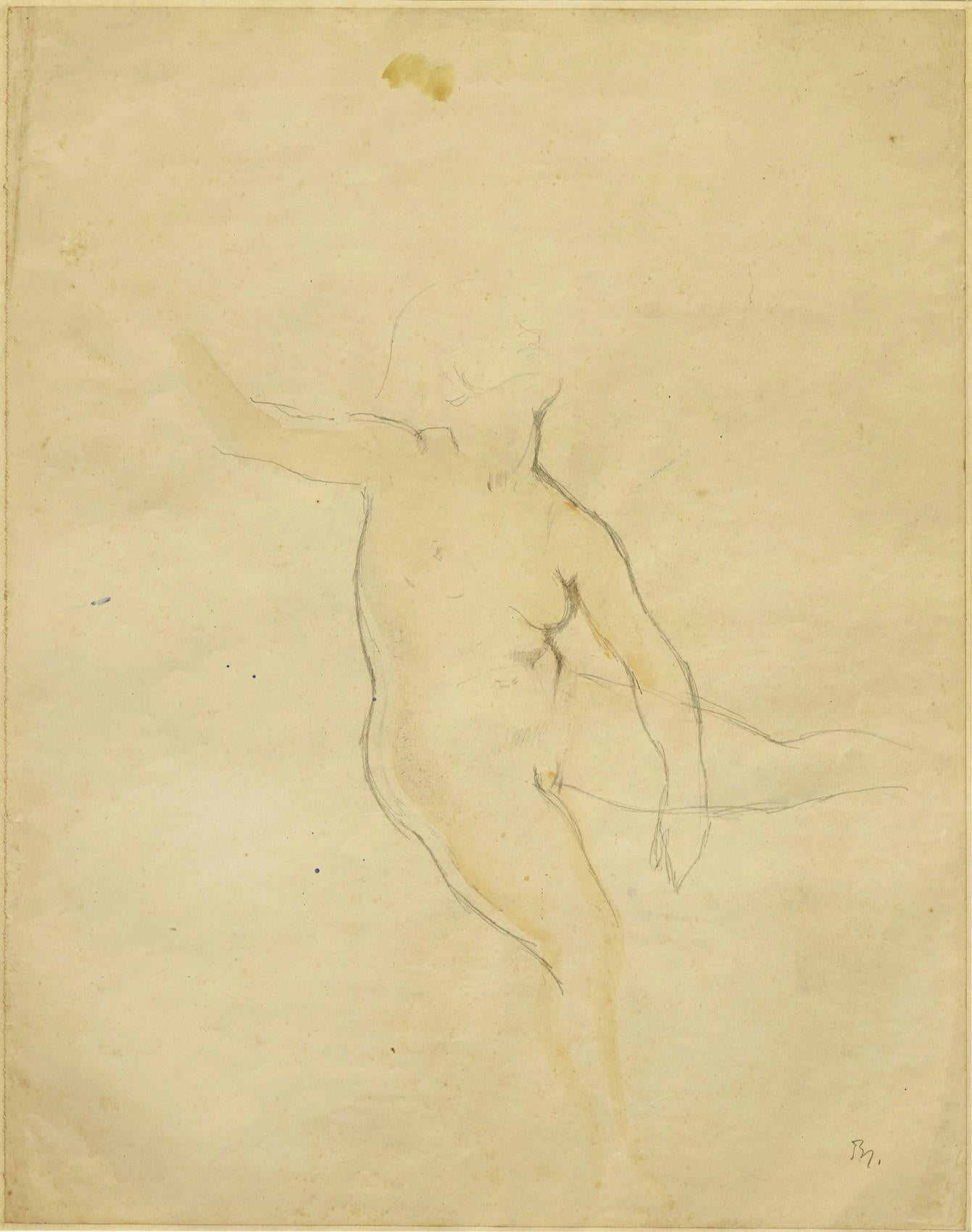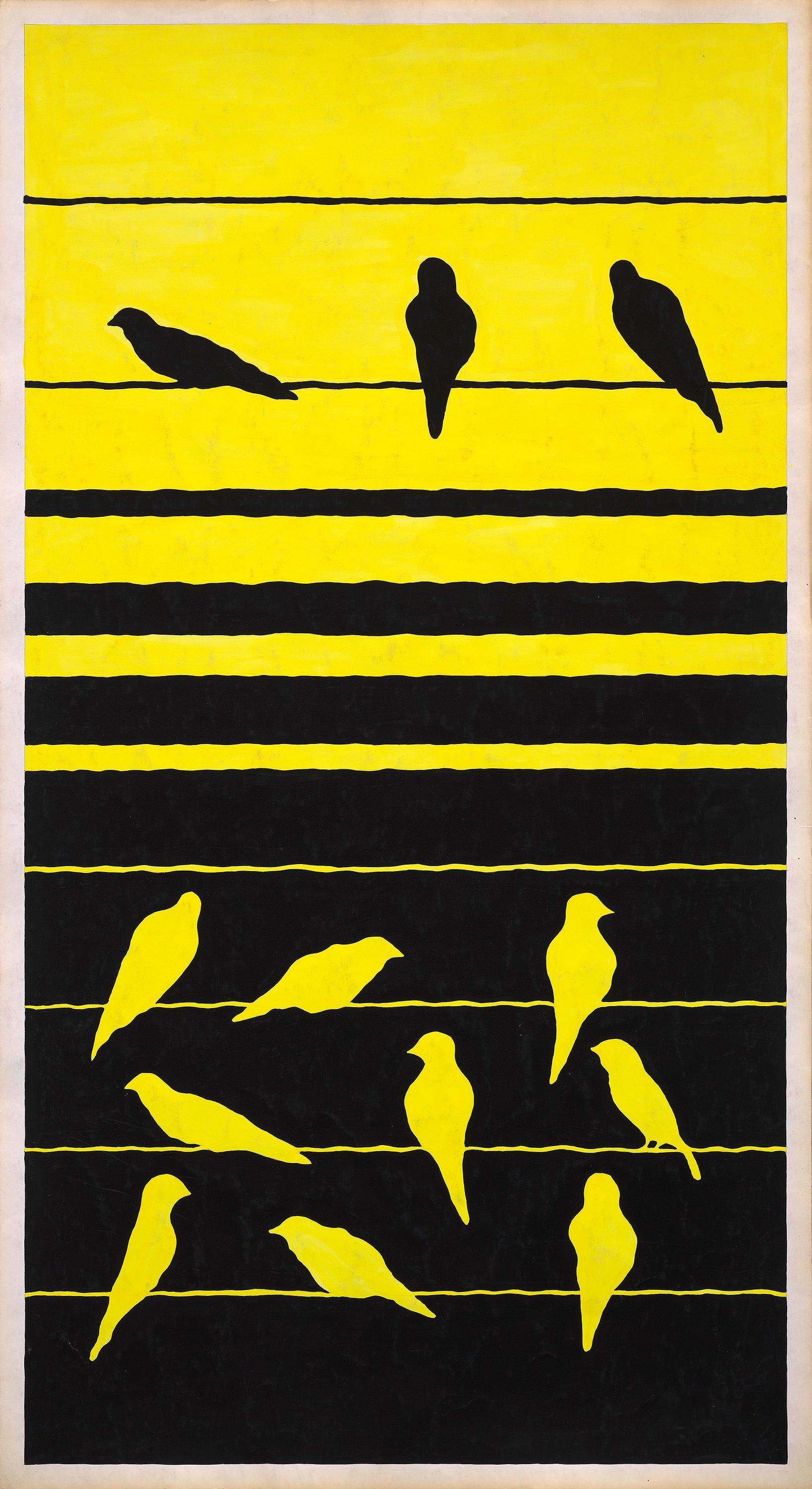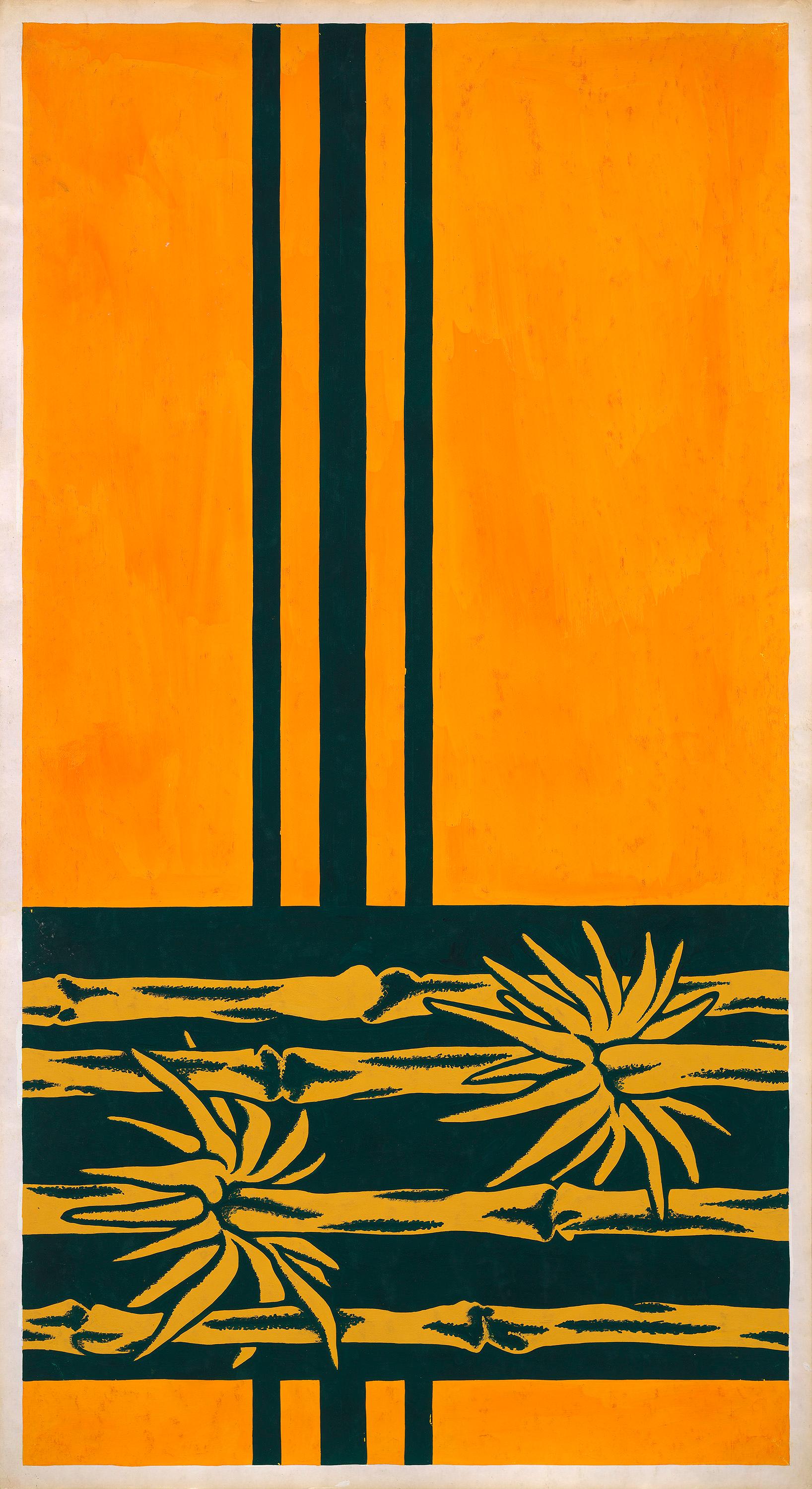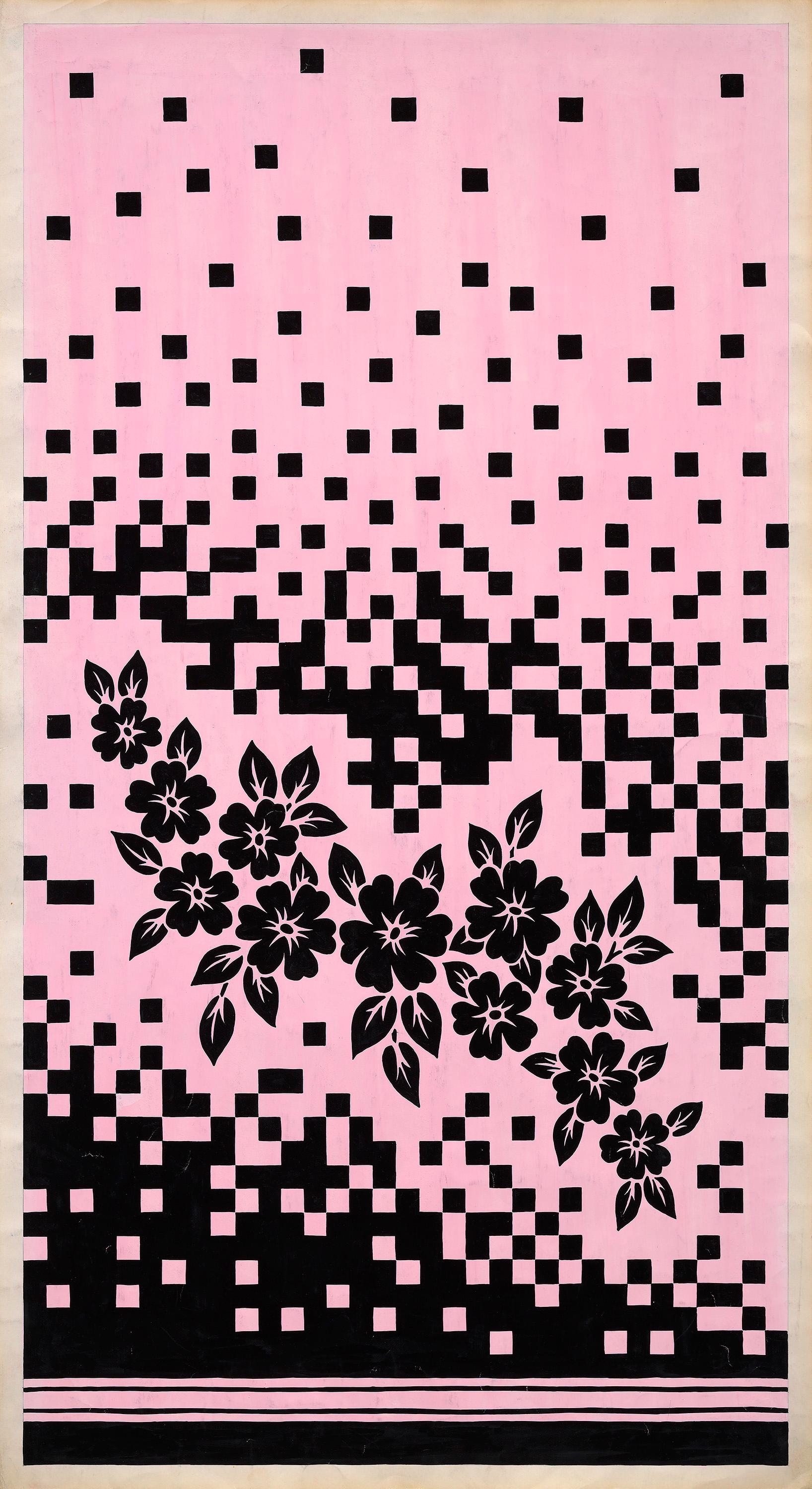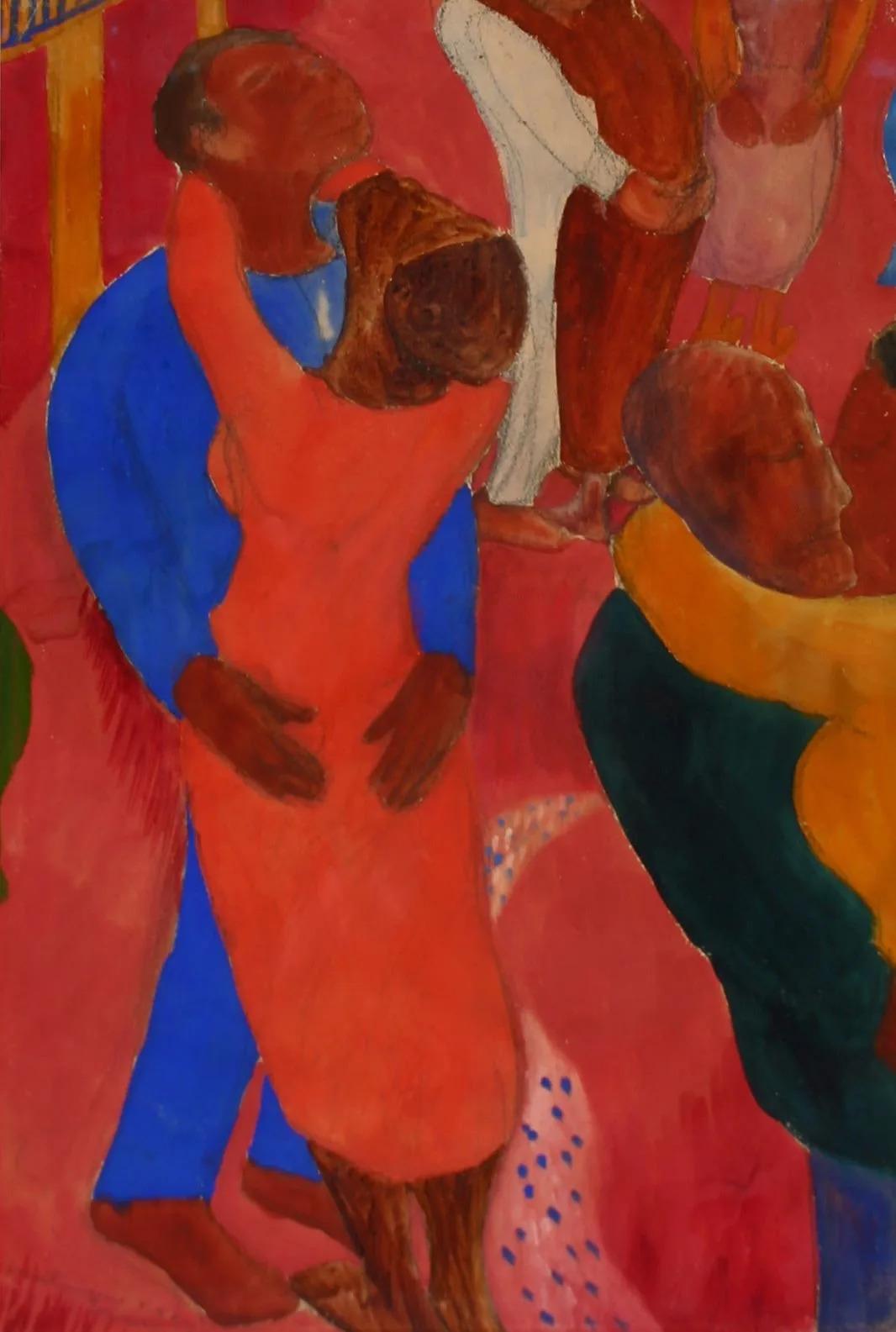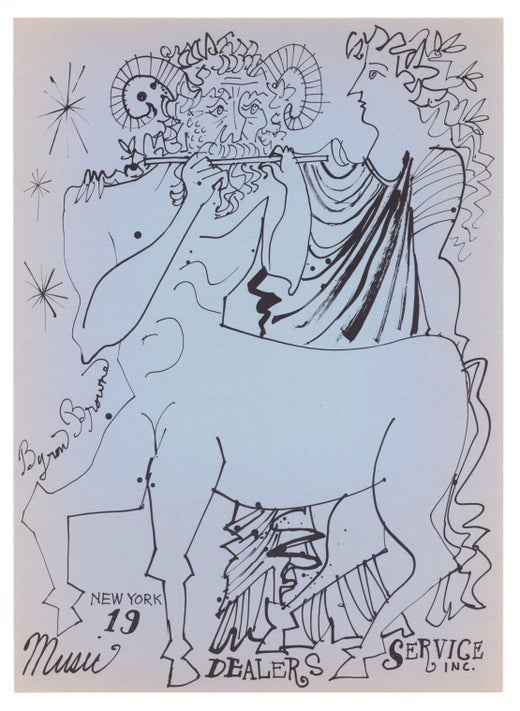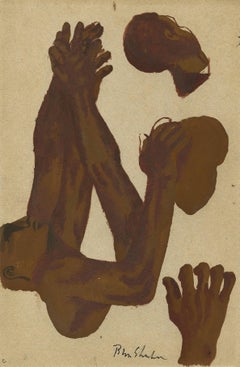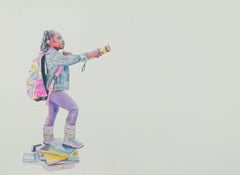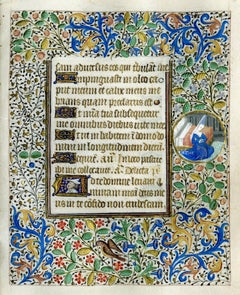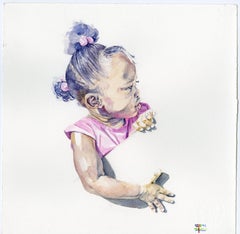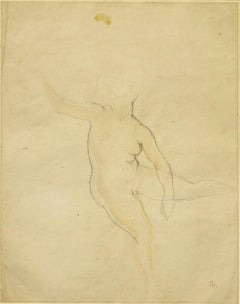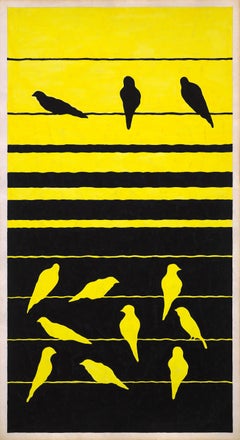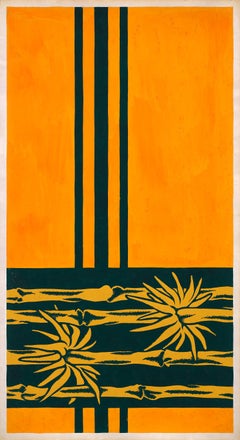Artículos similares a Neoclassical Head in profile
¿Quieres más imágenes o vídeos?
Solicita imágenes o vídeos adicionales al vendedor
1 de 10
Byron BrowneNeoclassical Head in profile1950
1950
Acerca del artículo
Neoclassical Head in profile
Watercolor and graphite on paper, 1950
Signed and dated lower left in ink (see photo)
Provenance: Washington, D.C. private collection
Condition: Excellent
Colors unfaded, no stains or tears to the large sheet
Sheet size: 27 x 22 1/4 inches
Frame size: 34 x 27 1/2 inches
Archival framing with acid free materials and OP3 Acrylic
Browne was a founding member of Abstract American Artists. In 1949, disillusioned by the current state of Abstract Art, Browne evolved to Neo Classicism having been influenced by Picasso. In 1950 he began teaching at the Art Students League in New York. 1050 is also the year of this painting. There are numerous similar large heads in profile, this being among the best works of the series.
Modernist painter and one of the founders of American Abstract Artists, a New York City organization devoted to exhibiting abstract art. Browne specialized in still life in the style of Synthetic Cubism, influenced by his friends John Graham, Arshile Gorky, and Willem de Kooning.
Joan Stahl American Artists in Photographic Portraits from the Peter A. Juley & Son Collection (Washington, D.C. and Mineola, New York: National Museum of American Art and Dover Publications, Inc., 1995)
Byron Browne was a central figure in many of the artistic and political groups that flourished during the 1930s. He was an early member of the Artists’ Union, a founding member of the American Abstract Artists, and participated in the Artists’ Congress until 1940 when political infighting prompted Browne and others to form the break-away Federation of Modern Painters and Sculptors. Browne’s artistic training followed traditional lines. From 1925 to 1928, he studied at the National Academy of Design, where in his last year he won the prestigious Third Hallgarten Prize for a still-life composition. Yet before finishing his studies, Browne discovered the newly established Gallery of Living Art. There and through his friends John Graham and Arshile Gorky, he became fascinated with Picasso, Braque, Miró, and other modern masters.
The mid 1930s were difficult financially for Browne.(1) His work was exhibited in a number of shows, but sales were few. Relief came when Burgoyne Diller began championing abstraction within the WPA’s mural division. Browne completed abstract works for Studio D at radio station WNYC, the U.S. Passport Office in Rockefeller Center, the Chronic Disease Hospital, the Williamsburg Housing Project, and the 1939 World’s Fair.(2)
Although Browne destroyed his early academic work shortly after leaving the National Academy, he remained steadfast in his commitment to the value of tradition, and especially to the work of Ingres.(3) Browne believed, with his friend Gorky, that every artist has to have tradition. Without tradition art is no good. Having a tradition enables you to tackle new problems with authority, with solid footing.(4)”
Browne’s stylistic excursions took many paths during the 1930s. His WNYC mural reflects the hard-edged Neo-plastic ideas of Diller, although a rougher Expressionism better suited his fascination for the rustic, mythical, and organic. A signer, with Harari and others, of the 1937 Art Front letter, which insisted that abstract art forms “are not separated from life,” Browne admitted nature to his art—whether as an abstracted still life, a fully nonobjective canvas built from colors seen in nature, or in portraits and figure drawings executed with immaculate, Ingres-like finesse.(5) He advocated nature as the foundation for all art and had little use for the spiritual and mystical arguments promoted by Hilla Rebay at the Guggenheim Collection: When I hear the words non-objective, intra-subjective, avant-garde and such trivialities, I run. There is only visible nature, visible to the eye or, visible by mechanical means, the telescope, microscope, etc.”(6)
Increasingly in the 1940s, Browne adopted an energetic, gestural style. Painterly brushstrokes and roughly textured surfaces amplify the primordial undercurrents posed by his symbolic and mythical themes. In 1945, Browne showed with Adolph Gottlieb, William Baziotes, David Hare, Hans Hofmann, Carl Holty, Romare Bearden, and Robert Motherwell at the newly opened Samuel Kootz Gallery. When Kootz suspended business for a year in 1948, Browne began showing at Grand Central Galleries. In 1950, he joined the faculty of the Art Students League, and in 1959 he began teaching advanced painting at New York University.
Courtesy of Smithsonian
- Creador:Byron Browne (1907-1961, Americana)
- Año de creación:1950
- Dimensiones:Altura: 68,58 cm (27 in)Anchura: 53,98 cm (21,25 in)
- Medio:
- Movimiento y estilo:
- Época:
- Estado:
- Ubicación de la galería:Fairlawn, OH
- Número de referencia:Vendedor: FA120221stDibs: LU14016413362
Byron Browne
Byron Browne (1907-1961) fue un pintor estadounidense y miembro fundador de los Artistas Abstractos Estadounidenses. Browne nació el 26 de junio de 1907 en Yonkers, Nueva York. Estudió en la Academia Nacional de Diseño de 1925 a 1928. He era miembro del Sindicato de Artistas. En 1936 fue uno de los miembros fundadores de los Artistas Abstractos Americanos. Creó murales bajo los auspicios de la Works Progress Administration para el Hospital de Enfermedades Crónicas y la Feria Mundial de Nueva York de 1939. En 1940 se casó con la también artista Rosalind Bengelsdorf. Fue profesor de pintura en la Liga de Estudiantes de Arte de Nueva York de 1948 a 1959 y pasó a enseñar en la Universidad de Nueva York. An He murió el 25 de diciembre de 1961 en Nueva York. La obra de Browne forma parte de las colecciones del Instituto de Arte de Chicago,[5] el Museo de Arte Moderno, el Philadelphia Museum of Art, el Smithsonian American Art Museum y el Whitney Museum of American Art.
Sobre el vendedor
5,0
Vendedor reconocido
Estos prestigiosos vendedores son líderes del sector y representan el escalón más alto en cuanto a calidad y diseño de artículos.
Vendedor Oro
Vendedores premium que mantienen una calificación de +4,3 y tiempos de respuesta de 24 horas
Establecido en 1978
Vendedor de 1stDibs desde 2013
789 ventas en 1stDibs
Tiempo de respuesta usual: <1 hora
Asociaciones
International Fine Print Dealers Association
- EnvíoRecuperando presupuesto…Envío desde: Fairlawn, OH
- Política de devolución
Partes de esta página se han traducido automáticamente. 1stDibs no puede garantizar la exactitud de las traducciones. El inglés es el idioma predeterminado de este sitio web.
Garantía de autenticidad
En el improbable caso de que haya algún problema con la autenticidad de un artículo, ponte en contacto con nosotros en un plazo de 1 año para recibir un reembolso total. DetallesGarantía de devolución de dinero
Si tu artículo no es como se describe, sufre daños durante el transporte o no llega, ponte en contacto con nosotros en un plazo de 7 días para recibir un reembolso total. DetallesCancelación dentro de las 24 horas
Tienes un período de gracia de 24 horas para reconsiderar tu compra, sin preguntas.Vendedores profesionales aprobados
Nuestros vendedores de primera clase deben cumplir estrictos estándares de servicio para mantener la integridad de nuestros anuncios.Garantía de igualación de precios
Si encuentras que un vendedor publicó el mismo artículo por un precio menor en otro lado, igualaremos ese precio.Entrega global de confianza
Nuestra red de transporte de primera ofrece opciones de envío especializado en todo el mundo, que incluye envío personalizado.Más de este vendedor
Ver todoJugador de baloncesto
Por Ben Shahn
Jugador de baloncesto
Aguada sobre cartulina, c. 1940
Firmado por el artista a tinta en la parte inferior central
Estudio para el mural al fresco del Edificio de la Seguridad Social ...
Categoría
Década de 1940, moderno estadounidense, Pinturas figurativas
Materiales
Gouache
En busca de nuevos comienzos (Las Pinturas 1)
Por Darius Steward
En busca de nuevos comienzos (Las Pinturas 1)
Acuarela sobre papel de alto gramaje Arches, 2021
Firmado con las iniciales del artista en las sombras de los libros (ver foto)
Firmado,...
Categoría
2.º década del siglo XXI, Realista, Pinturas figurativas
Materiales
Acuarela
Redondel que representa a Santa Catalina
Desconocido Arte y taller francés, mediados del siglo XV
Redondel que representa a Santa Catalina (?)
Aguada, aguada de tinta dorada y bruñido dorado sobre vitela
Folio del Book of ...
Categoría
siglo XV y antes, Antiguos maestros, Pinturas figurativas
Materiales
Gouache, Pigmento
Lee las Señales Año 2020 Parte 1.
Por Darius Steward
Lee las Señales Año 2020 Parte 1.
Firmado con las iniciales del artista abajo a la derecha
Firmado con el sello en seco "Yummy" del artista en la esquina inferior derecha
Acuarela so...
Categoría
2.º década del siglo XXI, Contemporáneo, Pinturas figurativas
Materiales
Acuarela
sin título
Por Darius Steward
Firmado con las iniciales del artista abajo a la derecha
Acuarela sobre papel de alto gramaje Twinrocker
Categoría
2.º década del siglo XXI, Contemporáneo, Pinturas figurativas
Materiales
Acuarela
4500 US$
Ojos bien abiertos
Por Darius Steward
Firmado con las iniciales del artista abajo a la derecha
Darius Steward se está consolidando como maestro de la acuarela y de los grandes murales públicos. En 2018, Steward creó do...
Categoría
2.º década del siglo XXI, Contemporáneo, Dibujos y acuarelas de retratos
Materiales
Acuarela
También te puede gustar
Estudio para "Levantarse" - 1955, dibujo preparatorio de Balthus (1908 -2001)
Por Balthus (Balthasar Klossowski de Rola)
En 1955, mientras residía durante dos años en el castillo de Chassy, en el Morvan, Balthus creó un gran cuadro titulado "Levantarse". Balthus se inspiró para este cuadro en los maes...
Categoría
Década de 1950, Moderno, Dibujos y acuarelas de desnudos
Materiales
Acuarela, Lápiz
Diseño Textil Original de los 70 Pintado a Mano Aguada Color Amarillo y Negro sobre Papel
Diseño de pájaros. Sellado en el reverso con el nombre del estudio de diseño y el número 98
Ofrecemos un pequeño número de estos diseños de ilustraciones originales de este estudio d...
Categoría
Década de 1970, Moderno, Dibujos y acuarelas de animales
Materiales
Papel, Gouache
Diseño Textil Original de los 70 Pintado a Mano Aguada Naranja y Verde sobre Papel
Diseño de bambú. Sellado en el reverso con el nombre del estudio de diseño y el número 972
Ofrecemos un pequeño número de estos diseños de ilustraciones originales de este estudio de...
Categoría
Década de 1970, Moderno, Dibujos y acuarelas de naturaleza muerta
Materiales
Papel, Gouache
Diseño Textil Original de los Años 70 Pintado a Mano Aguada Color Rosa y Negro sobre Papel
Flores y diseño de píxeles. Sellado en el reverso con el nombre del estudio de diseño y el número 268
Ofrecemos un pequeño número de estos diseños de ilustraciones originales de est...
Categoría
Década de 1970, Moderno, Pinturas figurativas
Materiales
Papel, Gouache
Petit Rhône, Gouache barniz sobre cartón
Pierre Charbonnier (1897-1978)
Pequeño Ródano
Gouache barniz sobre cartón
Firmado "P. Charbonnier" y titulado "Petit Rhône" abajo a la derecha
15 x 20,5 pulgadas
Marco : 50 x 70 cm
...
Categoría
mediados del siglo XX, Moderno, Pinturas de paisajes
Materiales
Gouache
Martinica F.W.I
Firmado abajo a la izquierda: Martinica F.W.I. / NEY
Procedencia
Colección privada
Lloyd Ney fue un pintor estadounidense miembro de la "Escuela Modernista de Nueva Esperanza". Nac...
Categoría
siglo XX, Moderno, Pinturas figurativas
Materiales
Témpera, Acuarela, Lápiz
14.500 US$
